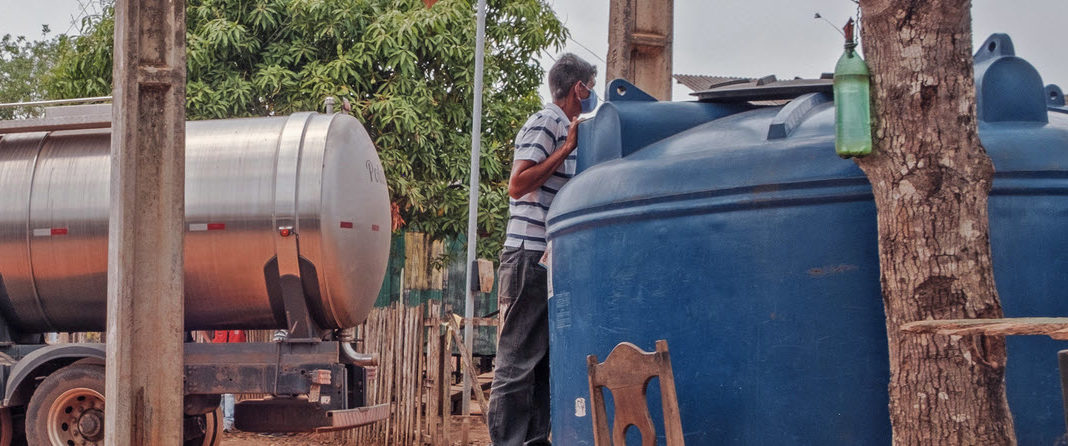- Extreme weather conditions, from massive flooding to severe water shortages, have rocked cities and small communities alike in the heart of the Brazilian Amazon this year, a trend experts attribute to climate change and human actions.
- The Acre River, which crosses the state of same name in the western Brazilian Amazon, is experiencing its second-worst drought in recorded history, with water levels close to record lows.
- The water shortage comes just months after the same region experienced widespread flooding as the Acre River overflowed its banks and forced hundreds of thousands of people to flee their homes.
- Brazil as a whole is facing its worst dry spell in nearly a century, which is affecting water supplies for people, agriculture and electricity generation, and is part of a global pattern of increased water stress.
This article was first published on Mongabay on 29 October 2021. You can read the original here.
RIO BRANCO, Brazil — In the space of just a few months, entire cities and small communities in the heart of the Brazilian Amazon have faced extreme weather conditions this year — from flood-related displacement to severe water shortage — that experts attribute to climate change and human actions, including the depletion of banks of the rivers. Rio Branco, capital of the Amazonian state of Acre, on the border with Peru and Bolivia, is one of these places.
The entire basin of the Acre River, which begins in Peru before crossing Bolivia and into Brazil, faces its second-worst drought in recorded history. In Rio Branco, where almost half of the state’s 413,000 residents live, the water level in the river reached 133 centimeters (52 inches) at the end of August — just 3 cm (1.2 in) above the lowest level ever recorded in the city, in 2016.
The lack of water poses severe challenges to the survival of the people and wildlife living along the river, as well as the farming industry. Rio Branco Mayor Tião Bocalom has declared state of emergency due to risks of potable water shortages in rural communities.
Among those already affected is the family of student Tayane Lima, 23, who lives in the village of Manoel Marques alongside the AC-90 Transacreana road, on the outskirts of Rio Branco. Comprising 15 families, the community is located 3 kilometers (less than 2 miles) from Riozinho do Rôla, one of the main tributaries of the Acre River. With no rain and with the water table falling, the two reservoirs that supply the village have also dried up, residents say.
“The lack of water interferes a lot with our daily lives. It does have a lot of impact because we cannot plant crops here [for subsistence]. We can’t clean the house. [And] here is a dry area, there’s a lot of dust,” Lima tells Mongabay on the balcony of her dusty wood-and-brick house, surrounded by the family’s farm animals. “It is even complicated for animals to drink water. We have to regulate it, because otherwise … there’s no water for bathing. So everything has to be controlled. We raise ducks, chickens and pigs and this [drought] influences their development because without water there won’t be a healthy animal … It’s sad.”
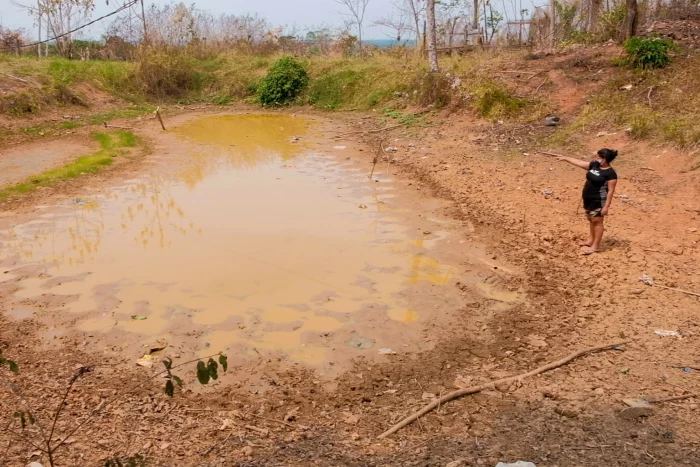
The shallow waters have also made the movement of people and goods along the river unfeasible. Acre has only one major road connecting the state to the rest of the country, which means that primary subsistence products are commonly transported in small boats on the river.
Lima says her community faces a water shortage every year from July to December, during the so called Amazon summer. The situation only starts to improve in January, with the beginning of the rainy season.
This year, the situation is much more severe, as Rio Branco went through 50 straight days without rain, according to data from the city’s Civil Defense, an institution responsible for prevention, mitigation and response to emergencies and disasters. In August, at the height of the drought, it only rained once in the municipality.
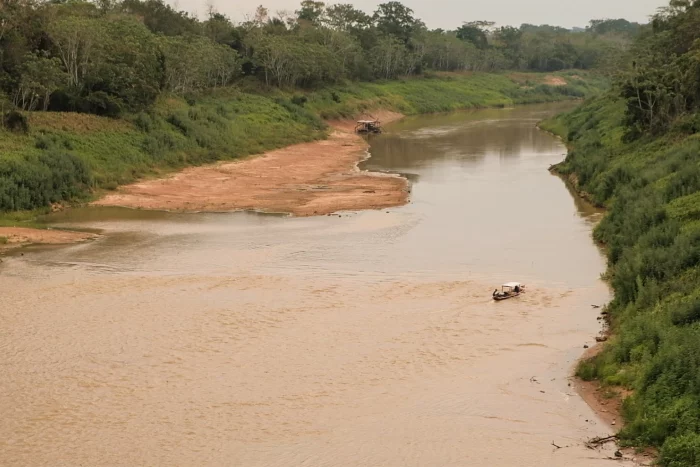
According to Waldemir Lima dos Santos, a researcher on hydrological risks and geography professor at the Federal University of Acre (UFAC), extreme droughts have been occurring more frequently in Acre in recent years compared to just once a decade in the past.
“Extreme weather is breaking a pattern that was previously quite well defined. Today, we have severe droughts at shorter intervals of time, in the period of three or four years, and sometimes even annually,” Santos says in an interview at his office at UFAC.
He says climate change plays a fundamental role in this process, as it interferes with elements directly and indirectly responsible for the frequency of rainfall in the region, such as humidity, temperature and solar radiation. “The variation in the dynamics in the water level of the Acre River is related to an ongoing climate change on the planet. These changes in the climate impact living beings and natural systems.”
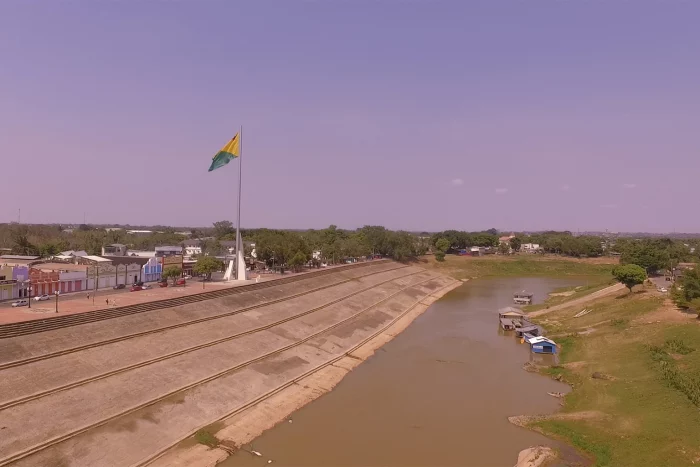
Man-made extreme weather
Acre isn’t the only part of Brazil experiencing severe drought this year. Brazil as a whole recorded its lowest amount of rainfall in the last 91 years during the period from September 2020 to June 2021, according to the Ministry of Energy’s monitoring committee.
A study released in August by the World Meteorological Organization (WMO), a United Nations agency, shows droughts in the southern Amazon and the Pantanal wetlands getting progressively worse: in 2020, drought in these regions was the most extreme in 50 years.
Climate change is also threatening public health, food production, power generation, water supply and the environment in the Amazon and Pantanal biomes, according to the study, which issues a special warning related to forest fires and deforestation, since these regions together host 57% of the world’s tropical forests.
In a broader and more recent study, the WMO says there are more than 2 billion people worldwide currently suffering water stress and that this number is “expected to increase,” threatening water resource sustainability, and economic and social development. The WMO’s secretary-general, Petteri Taalas, told the press that in the long term, a reduction in rainfall and increase in temperatures in the Amazon pose risks to the ecosystem.
The extremely severe drought in Acre comes only a few months after another environmental challenge in the region. In early 2021, at the height of the COVID-19 pandemic in Brazil, the state experienced one of its biggest floods in history, with almost half of all municipalities affected. At the time, the state government decreed a state of public calamity.
According to the state’s fire department, around 130,000 people, including Indigenous people and small farmers, were affected in the capital and in the hinterland. In Tarauacá, a municipality along the Acre River, 90% of the land area was submerged. The last major flood in the state occurred in 2015, a year before its worst drought.
Santos, the UFAC researcher, says the biggest problem facing the Acre River today is the deforestation of its banks and springs, which are “almost all degraded.” The clearing of land for cattle pasture, he says, is one of the drivers behind the razing of the forests that protect the springs, which directly border six of 22 municipalities in Acre.
In addition to the deforestation of the riparian forests, forest fires also have a direct impact on the drought, according to the state environmental department. As a consequence, the lack of rain influences not just the water levels in the river, but also the air quality due to forest fires.
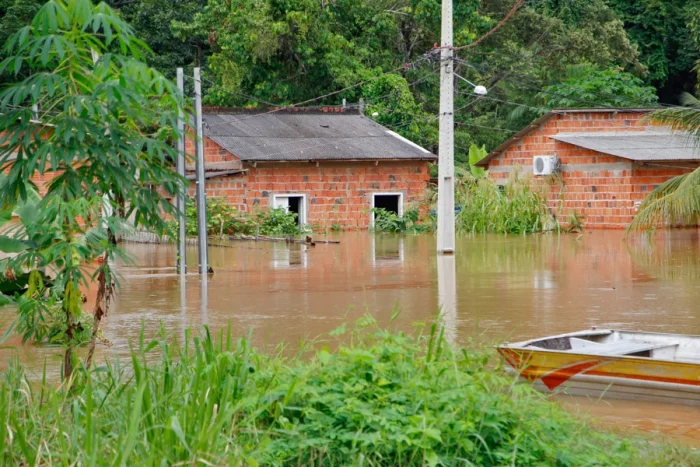
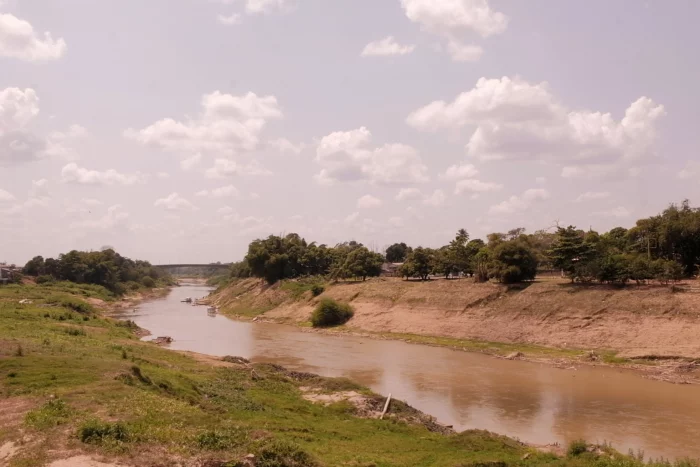
According to Santos, subsistence agriculture also contributes a lot to the poor water quality. “With the arrival of the rains, loose materials from the crops are carried to the bottom of the river valley, causing accumulation and, later, a silting process, which means the burial of the water table. Once buried, the riverbed is no longer fed by the underground aquifer and ends up having little water in these dry periods.”
Disposal of untreated industrial waste in the river also contributes to the degradation of the Acre River, he added. Items ranging from plastic bottles to refrigerators and furniture can all be found in the river and end up accumulating at the bottom, exacerbating the silting process, according to Santos.
Compounding the damage is the domestic sewage that’s dumped directly into the river. Today, only 23.5% of Rio Branco residents living in urban areas have access to sewage systems, according to the National Sanitation Information System (SNIS), leaving the rest to dispose of their waste into waterways that wind up in the river. During the drought, the concentration of pollutants increases, Santos said. Across the state as a whole, the situation is even worse: 90% of the population doesn’t have access to sewage collection, and less than half to treated water.
While the situation in Acre is especially critical, lack of access to adequate sanitation is a problem for Brazil in general. Only half of the total population has access to sewage collection, and about 35 million people do not have access to potable water, in a country of 210 million.
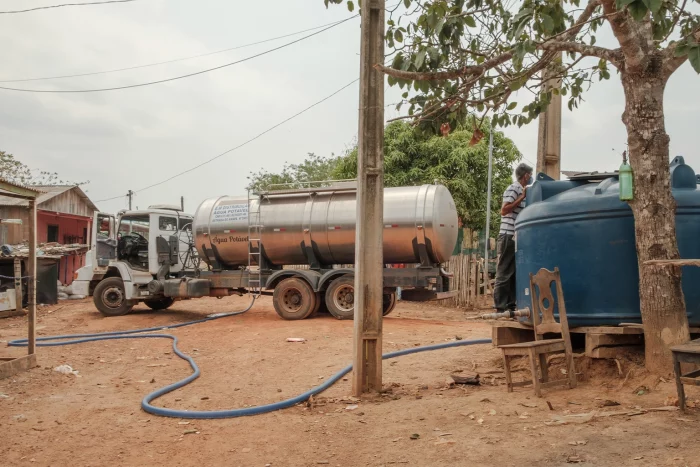
Yet despite these problems, the Acre state government’s water supply operations haven’t been affected by the falling water levels in the river, says Alan Ferraz, director of operations at the state department of water and sanitation, or Depasa. To avoid shortage, he says, the government operates floating collection systems throughout the river. But this service doesn’t reach those urban neighborhoods living further upstream and rural villages, which have to get their water from wells.
To help these communities, the Rio Branco municipal government sends out tanker trucks of water twice a week, serving 12 rural communities on the capital’s outskirts. Another five should be covered soon, according to the Civil Defense.
In Manoel Marques, the city delivers 5,000 liters (1,320 gallons) of water every Tuesday and Friday. “It does make up for our lack of water. It’s good water, thank God,” says Lima, the student. But it’s not enough, she says; families here run out of water before the next delivery.
“We really want this help from the mayor to solve this water issue even more … ask him to increase [the number of] tanker trucks and water tanks,” Lima highlights. “If he sent a larger quantity [of water] it would be much better, because there are many families [here] … Our biggest problem today is the [lack of] water.”
Banner image: To help the communities during droughts, the Rio Branco municipal government in Acre state sends out tanker trucks of water twice a week, serving 12 rural communities on the outskirts of the city. Image by Alexandre Noronha for Mongabay.

